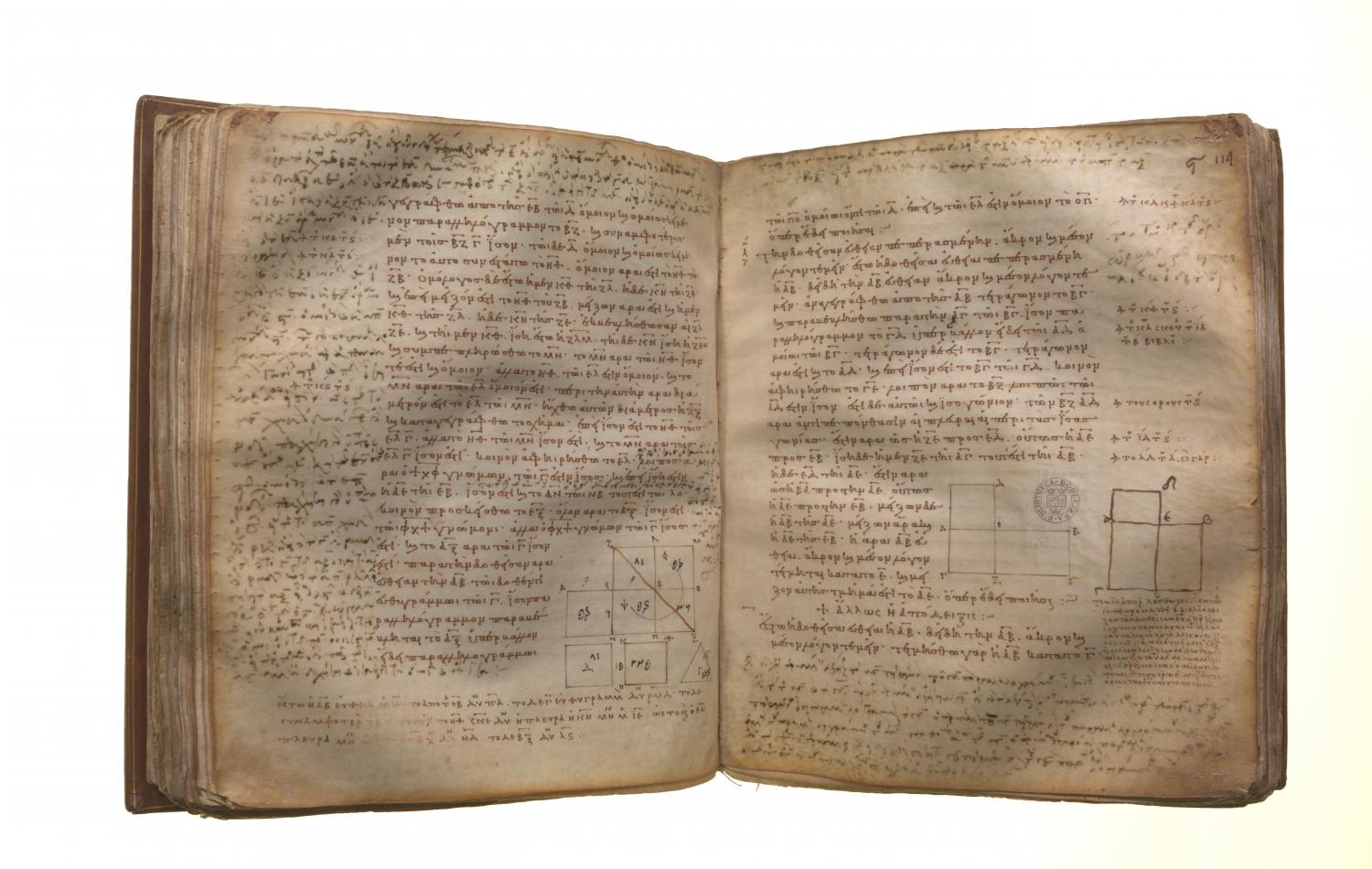Τὴν δοθεῖσαν εὐθεῖαν πεπερασμένην ἄκρον καὶ μέσον λόγον τεμεῖν. Ἔστω ἡ δοθεῖσα εὐθεῖα πεπερασμένη ἡ ΑΒ: δεῖ δὴ τὴν ΑΒ εὐθεῖαν ἄκρον καὶ μέσον λόγον τεμεῖν. Ἀναγεγράφθω ἀπὸ τῆς ΑΒ τετράγωνον τὸ ΒΓ, καὶ παραβεβλήσθω παρὰ τὴν ΑΓ τῇ ΒΓ ἴσον παραλληλόγραμμον τὸ ΓΔ ὑπερβάλλον εἴδει τῷ ΑΔ ὁμοίῳ τῷ ΒΓ. Τετράγωνον δέ ἐστι τὸ ΒΓ: τετράγωνον ἄρα ἐστὶ καὶ τὸ ΑΔ. καὶ ἐπεὶ ἴσον ἐστὶ τὸ ΒΓ τῷ ΓΔ, κοινὸν ἀφῃρήσθω τὸ ΓΕ: λοιπὸν ἄρα τὸ ΒΖ λοιπῷ τῷ ΑΔ ἐστιν ἴσον. ἔστι δὲ αὐτῷ καὶ ἰσογώνιον: τῶν ΒΖ, ΑΔ ἄρα ἀντιπεπόνθασιν αἱ πλευραὶ αἱ περὶ τὰς ἴσας γωνίας: ἔστιν ἄρα ὡς ἡ ΖΕ πρὸς τὴν ΕΔ, οὕτως ἡ ΑΕ πρὸς τὴν ΕΒ. ἴση δὲ ἡ μὲν ΖΕ τῇ ΑΒ, ἡ δὲ ΕΔ τῇ ΑΕ. ἔστιν ἄρα ὡς ἡ ΒΑ πρὸς τὴν ΑΕ, οὕτως ἡ ΑΕ πρὸς τὴν ΕΒ. μείζων δὲ ἡ ΑΒ τῆς ΑΕ: μείζων ἄρα καὶ ἡ ΑΕ τῆς ΕΒ. Ἡ ἄρα ΑΒ εὐθεῖα ἄκρον καὶ μέσον λόγον τέτμηται κατὰ τὸ Ε, καὶ τὸ μεῖζον αὐτῆς τμῆμά ἐστι τὸ ΑΕ: ὅπερ ἔδει ποιῆσαι.
To cut a given finite straight line in extreme and mean ratio. Let AB be the given finite straight line; thus it is required to cut AB in extreme and mean ratio. On AB let the square BC be described; and let there be applied to AC the parallelogram CD equal to BC and exceeding by the figure AD similar to BC. [VI. 29] Now BC is a square; therefore AD is also a square. And, since BC is equal to CD, let CE be subtracted from each; therefore the remainder BF is equal to the remainder AD. But it is also equiangular with it; therefore in BF, AD the sides about the equal angles are reciprocally proportional; [VI. 14] therefore, as FE is to ED, so is AE to EB. But FE is equal to AB, and ED to AE. Therefore, as BA is to AE, so is AE to EB. And AB is greater than AE; therefore AE is also greater than EB.
